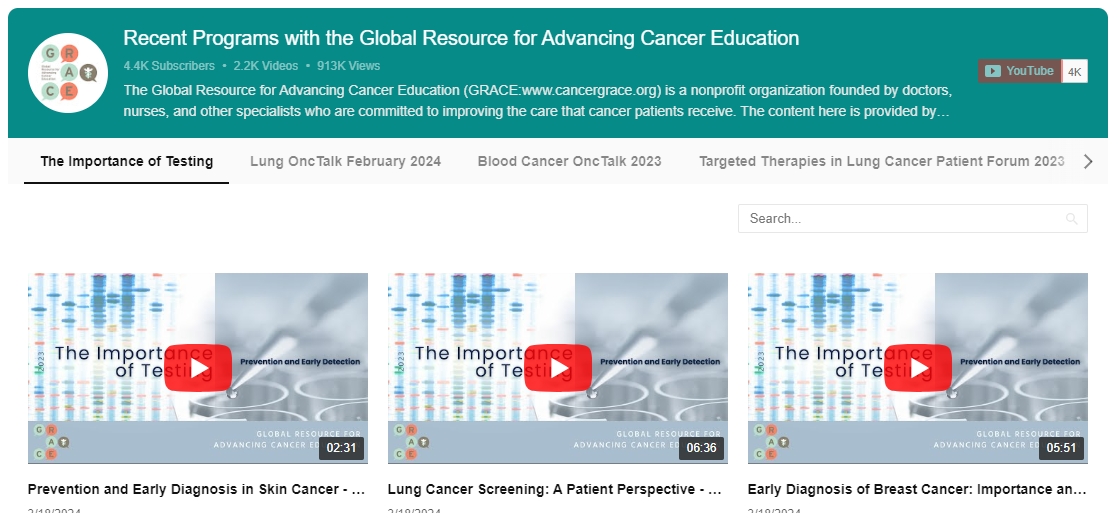Article and Video CATEGORIES
I missed part of the presentation of the SATURN survival data at the World Lung Conference to hear a very provocative presentation by my cross-town colleague, Dr. Barbara Campling. I know and respect Dr. Campling from her time at the Philadelphia VA, where she took excellent care of veterans with lung cancer for many years. At thoracic tumor board, she could always be counted on to ask about a lung cancer patient’s smoking and smoking cessation history.
For years, we have known that lung cancer patients often quit before their diagnosis. Although we don’t talk much about it, we’ve known for some time that the risk of lung cancer exceeds that of continuing smokers for a few years after quitting. The predominant view of this phenomenon is that many patients quit before diagnosis because of early symptoms of their lung cancer. A minority argue that maybe smoking cessation can even cause lung cancer.
Dr. Campling made some observations that made her question these hypotheses. She saw that many of her patients quit smoking before their diagnosis, and before they even felt symptoms related to lung cancer. In talking to her patients who had quit, some of them reported that even thought they were once heavy smokers and very addicted, they found quitting effortless. One patient reported that he woke up one morning and just forgot to have his morning cigarette. Any of you who have been truly addicted to nicotine or anything else know that you don’t just forget to smoke. So, as a good scientist does, Dr. Campling asked if there was something else going on.
Dr. Campling interviewed 115 lung cancer patients about their dates of cessation, onset of symptoms, diagnosis, and degree of maximal addiction. For comparison, she also interviewed patients with prostate cancer and heart attacks. Prostate cancer served as a cancer control because it is one of the cancers least associated with cigarettes. Heart attacks served as another important control because it is a non-cancerous but smoking related health condition.
The data on the control groups, circled in pink below, was consistent with what is known about smoking and smoking cessation.
In both patients with prostate cancer and myocardial infarction (heart attacks) current smokers smoked longer than former smokers (duh) and were more addicted than those who quit (again, duh; the less addicted, the easier to quit). The results for the lung cancer patients, however, were surprising:
FTND is the Fagerström Test for Nicotine Dependence. It measures peak addiction. Circled in yellow, the FTND data show that the prostate cancer patients and heart attack patients were more likely to quit if they were less addicted at the peak of their smoking. In contrast, the average addiction score, at peak addiction, for lung cancer patients, were identical in those who quit compared to those who did not. So something changed between peak addiction and quit time for the lung cancer patients, but not for their peers with prostate cancer or heart attacks. In fact, 31% of the lung cancer patients reported quitting with no difficulty at all, a remarkable figure.
Lung cancer patients also quit closer to their diagnosis than the prostate cancer patients and heart attack patients. Note that earlier time is on the right, and more recent time is on the left.
This curve took me a minute to fully understand. First, let me clarify that “hazard function” essentially means chance of quitting smoking. Clearly, “hazard” is a funny term to apply to quitting smoking—the real hazard is in continuing to smoke. However, it is the statistically correct term for the way the analysis was done. At any rate, the very left steep parts of the curves are the time right before diagnosis. Patients with any of the three health conditions were likely to quit immediately before diagnosis — this reflects the phenomena of feeling ill and quitting because of it. However, if you look just to the right of the really steep portion, you can see where lung cancer patients are different from heart attack patients or prostate cancer patients. Heart attack patients and prostate cancer patients were more likely to quit earlier before their diagnosis. Thus, their curves go up as you to go the right. The lung curve goes the other way—it’s higher (reflecting a higher chance of quitting) the closer you get to the time of diagnosis (time 0, or the left portion of the curve). This suggests that something changes in lung cancer patients as they near diagnosis that makes them more prone to quit.
Small-cell is a more aggressive cancer than non-small-cell, and likely has a shorter interval between onset and diagnosis than non-small cell. In other words, non-small cell has been there longer at the time of diagnosis. Thus, if smoking cessation can be a presenting symptom of lung cancer, we would expect that non-small cell patients would quit earlier than small-cell patients. Indeed, this was observed — the median interval from cessation to diagnosis for small-cell was 6.5 months, compared with 3.5 years for non-small cell.
This final curve, shown below, is again easier to read from right to left. The blue curve is the probability of quitting, and the purple curve is probability of having symptoms. As time passes, (right to left) symptoms increase, but the smoking cessation comes before the symptoms. The red arrows indicate patients who quit after symptoms came on; notice they are a minority of the patients.
Taken together, these results suggest that there is a sub-population of lung cancer patients with some special characteristics of their quitting. Even though they were once very addicted and smoked a lot, something changes to break their addiction and allows them to quit with ease. The time intervals of 6.5 months on average for SCLC and 3.5 years for NSCLC are consistent with the idea that they may be quitting just as their cancer is starting—thus, for some, smoking cessation may be the first sign of lung cancer.
I see at last three major implications of this hypothesis. The first is to contradict the idea that quitting smoking somehow causes lung cancer. Although quitting clearly doesn’t completely protect against lung cancer, we have high quality data to show that quitting at any point lowers risk compared to continuing to smoke. Second is the opportunity for screening. Perhaps we should screen people who quit smoking spontaneously and with great ease for lung cancer for several years after; if their lung cancer could be caught at an early stage, we could improve cure rates. Finally, I wonder if some lung cancers secrete a chemical that interferes with addiction. In the draft manuscript being prepared for publication (which Dr. Campling was kind enough to share), she speculates about some of the molecules known to be secreted by lung cancer. If we could isolate the responsible factor, perhaps we would have a truly effective smoking cessation drug.
Please feel free to offer comments and raise questions in our
discussion forums.
Forum Discussions
Hi Blaze,
As much as I hate to say it, Welcome back Blaze. It sounds like you're otherwise feeling good and enjoying life which is a wonderful place to be. ...
Waiting for my appointment with oncologist this morning. Thank you for the response. It helps. <3
It sounds like you’re thinking of this in a very appropriate way. Specifically, it sounds like the growth of the nodule is rather modest, though keep in mind that the change...
Hi and welcome to GRACE. I'm sorry your mom is having this difficulty. An indwelling catheter is used when the pleura space continually fills and the catheter is always there to...








